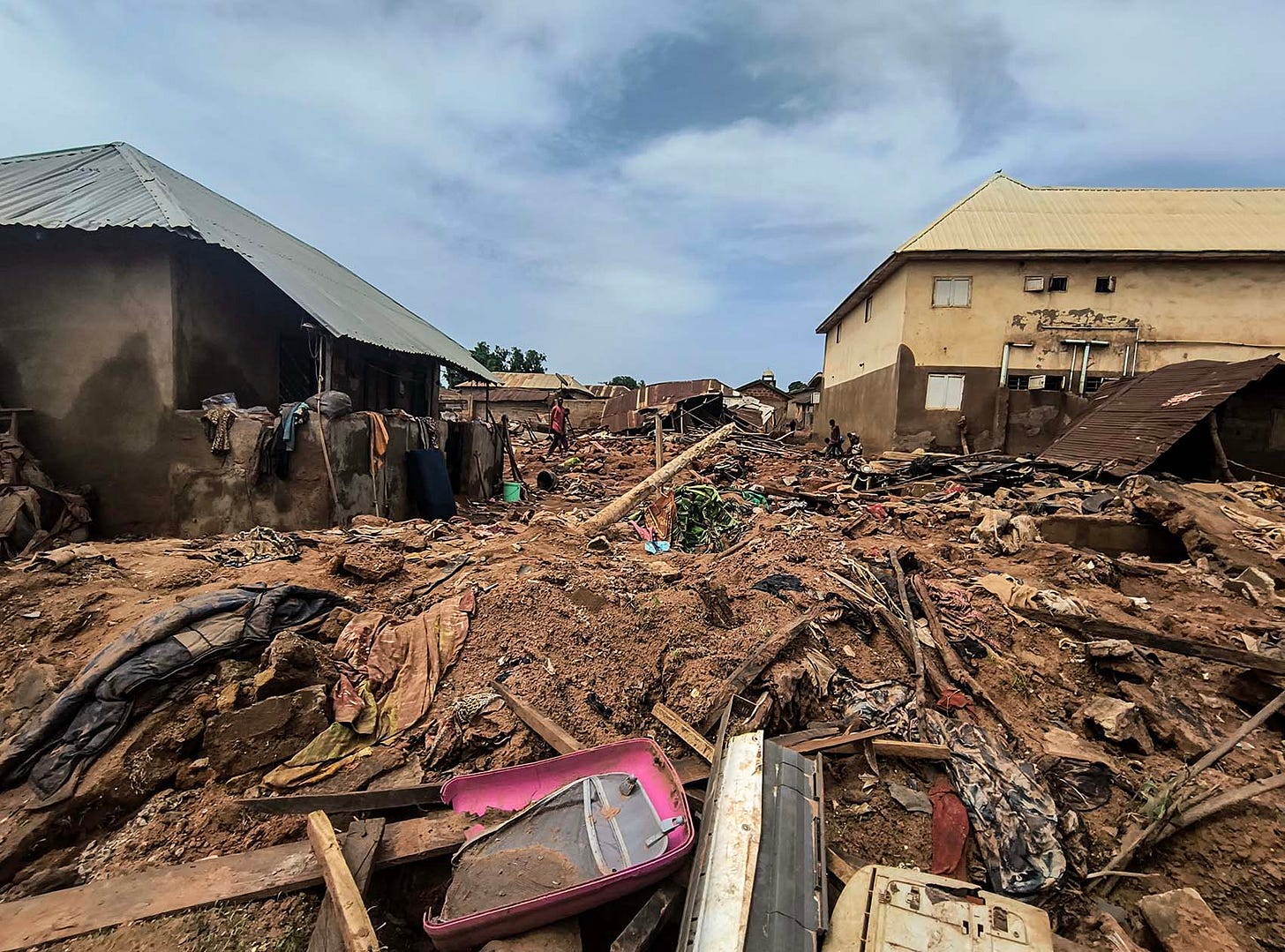Catastrophic rains in Mokwa send hundreds to their death
By 4 June, more than 200 were confirmed dead but that number could be as high as 700.
Hussain Wahab in Mokwa

Eid preparations are all about going to the market – transporting animals, haggling, buying and selling. But disaster struck the major transit town of Mokwa in central Nigeria.
Mokwa serves as a key link between livestock traders and food producers in the north, with consumers in the south of the country. On 29 May, intense overnight rains triggered catastrophic floods that collapsed the key infrastructure, including the vital Mokwa bridge. A mosque where dozens had taken shelter overnight collapsed. Two key roads were also washed away.
With the ruined transport infrastructure, rescue efforts have been slow. Niger State’s agency for emergencies initially reported that 159 individuals had died in the flooding. By 4 June, more than 200 were confirmed dead but that number could be as high as 700. The BBC reported that 500 were missing thought unlikely to still be alive.
More than 3,000 people are displaced; many are now living with relatives or crammed into overcrowded temporary shelters. Unicef said that over 250 homes and businesses were destroyed, and more than 10,000 hectares of farmland ruined.
Fatima Goro, a student of Usmanu Danfodiyo University in Sokoto, had returned to Mokwa from school. She found her family home washed away. “It is so painful… My education is in limbo,” she told The Continent.
Local governor Umar Bago of Niger has cancelled all Eid-el-Kabir (or Eid al-Adha) activities in the state to mourn and honour the victims. President Bola Tinubu has declared a state of emergency and approved two-billion naira (about $1.3-million) to help fund the crisis response.
The disaster has also disrupted trade as far south as 200km away in Oyo.
“The market is empty this sallah season. We can’t travel to restock,” said Yusuf Olusho, who sources animals from the north. “The market should be bustling with animals, but this year, they are scarce and costly.”
Emergency officials and experts have blamed poor drainage systems, decaying infrastructure, and a lack of preparedness for the scale of destruction occasioned by the natural disaster.



